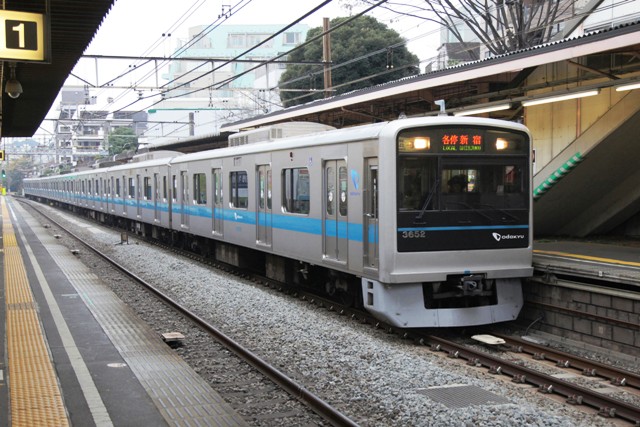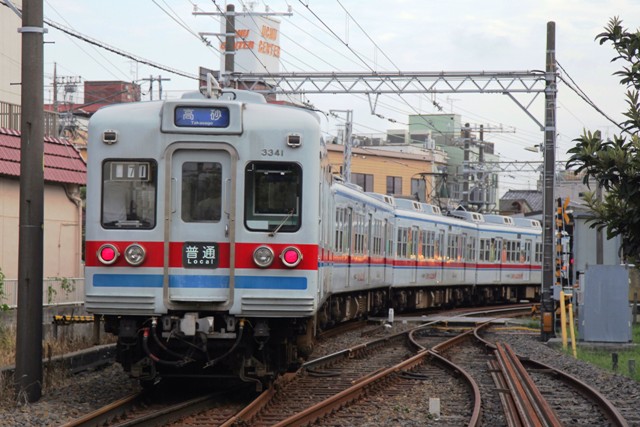
Professional railway mimic, Shinji Tachikawa's performance for the "Chitofuna Festival"
That guy has come back to Chitose-Funabashi, my town on the Odakyu Line. Wearing a railway employee-like yellow colored uniform, he appeared on stage at the "Chitofuna (Chitose-Funabashi) Festival", an annual local event (see the top photo). His name is Shinji Tachikawa, a professional railway mimic.
Shinji has a large repertoire of mimics.
First, he imitates trains all over Japan. For example, he does a running high speed Shinkansen train very well. He is good at imitating commuter trains, such as the Odakyu Electric Railway (see the follwowing picture). It is very difficult, because most of these trains have VVVF (Variable Voltage and Variable Frequency) inverter control systems, which generate complicated modulated sounds. But, he reels it off.
Second, Shinji imitates station and train announcements. For example, he does station staff announcements on the Odakyu Line. He is good at imitating the automatic English broadcast from the Shinkansen trains as well. Surprisingly, Shinji can imitate two kinds of broadcast perfectly. They are the Tokaido and the Tohoku Shinkansens. He says the intonations are slightly different. "The automatic English broadcast in the Tohoku Shinkansen train is more emotional than that of the Tokaido Shinkansen."
According to Shinji's website, he used to be an engineer in a major cement company, but resigned to be a railway mimic. What's remarkable is that Shinji is a much-in-demand showman in this country. Since the late 1990s, Japan has developed as a subculture paradise. This very specific area, railway mimics are a real ultimate subculture in this country.
Shinji has a large repertoire of mimics.
First, he imitates trains all over Japan. For example, he does a running high speed Shinkansen train very well. He is good at imitating commuter trains, such as the Odakyu Electric Railway (see the follwowing picture). It is very difficult, because most of these trains have VVVF (Variable Voltage and Variable Frequency) inverter control systems, which generate complicated modulated sounds. But, he reels it off.
Second, Shinji imitates station and train announcements. For example, he does station staff announcements on the Odakyu Line. He is good at imitating the automatic English broadcast from the Shinkansen trains as well. Surprisingly, Shinji can imitate two kinds of broadcast perfectly. They are the Tokaido and the Tohoku Shinkansens. He says the intonations are slightly different. "The automatic English broadcast in the Tohoku Shinkansen train is more emotional than that of the Tokaido Shinkansen."
According to Shinji's website, he used to be an engineer in a major cement company, but resigned to be a railway mimic. What's remarkable is that Shinji is a much-in-demand showman in this country. Since the late 1990s, Japan has developed as a subculture paradise. This very specific area, railway mimics are a real ultimate subculture in this country.
EMU Odakyu 2000 series stands at Kyodo Station
More information about EMU Odakyu 2000 series (in Japanese):

































